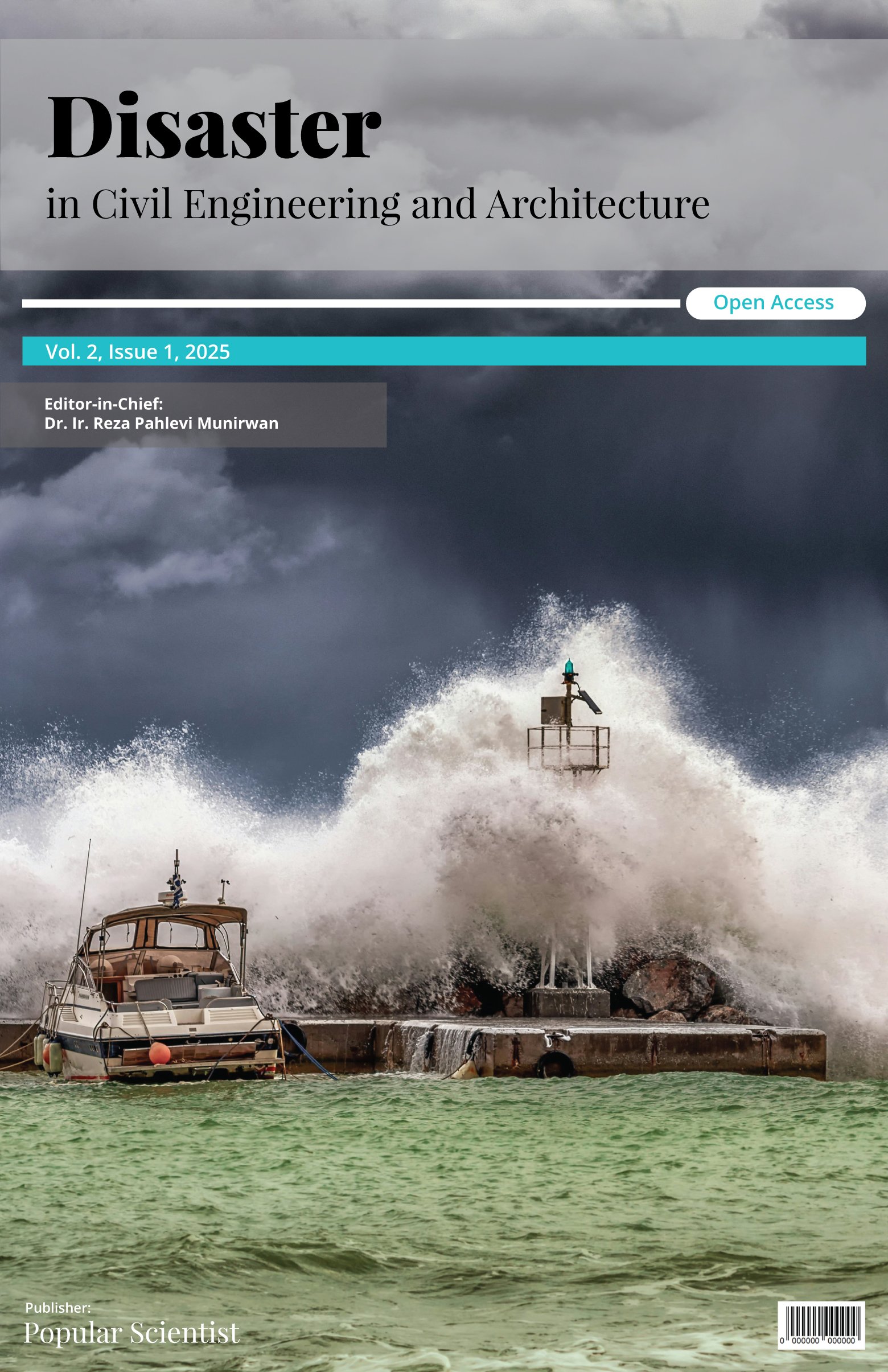Seismic Performance Assessment of Regular and Irregular RC Buildings Under BNBC 2020 Using ETABS
DOI:
https://doi.org/10.70028/dcea.v1i2.28Keywords:
Seismic Load, Plan Irregularity, Lateral Load, BNBC, ETABSAbstract
Seismic performance analysis is crucial to guaranteeing the structural safety of buildings, particularly in seismic-prone locations. This study examines the seismic performance of reinforced concrete (RC) structures with regular and irregular plan forms using ETABS v17 and the Equivalent Static Force Procedure (ESFP) based on the Bangladesh National Building Code (BNBC) 2020. This study focuses on the major earthquake characteristics such lateral displacement, story drift, base shear, torsional irregularity, and overturning moment. Seven alternative plan forms, including rectangle, square, T, U, W, H, and L-shaped structures, were examined to assess the impact of geometric imperfections on seismic response. The results demonstrate that irregular structures endure substantially greater lateral displacement and story drift than regular designs, particularly above the seventh story, which renders them more sensitive to seismic activity. The W-shaped structure maintained the largest base shear, but torsional irregularity was more noticeable in T, U, and H-shaped structures, showing their sensitivity to rotational impacts. Overturning moment study also suggested that irregular structures are more sensitive to instability induced by non-uniform distribution of pressures. All these discoveries underscore the requirement of optimal structural design, superior lateral load-resisting systems, and suitable reinforcing to limit seismic threats. The study emphasizes the need for compliance with seismic design codes and recommends that the incorporation of shear walls, bracing systems, and moment-resisting frames would be able to improve seismic strength. Future research should take into account sophisticated nonlinear dynamic analysis and retrofitting solutions to further increase the seismic resilience of irregular high-rise buildings.
Downloads
References
A. M. Kanvinde and G. G. Deierlein, “Mechanics-based approaches for seismic performance assessment of steel structures,” J. Struct. Eng., vol. 136, no. 8, pp. 935–944, 2010.
R. G. Herrera and C. G. Soberon, “Influence of plan irregularity of buildings,” in Proc. 14th World Conf. Earthquake Eng., 2008.
C. Ravikumar, S. Suresh, B. V. Sujith, and P. Vivek, “Effect of irregular configurations on seismic vulnerability of RC buildings,” Architecture Research, vol. 2, no. 3, pp. 20–26, 2012.
A. K. Chopra, Dynamics of structures: Theory and applications to earthquake engineering. Prentice Hall, 2001.
Bangladesh National Building Code, BNBC 2020. Housing and Building Research Institute, Dhaka, Bangladesh, 2020.
E. V. Valmundsson and J. M. Nau, “Seismic response of building frames with vertical structural irregularities,” J. Struct. Eng., vol. 123, no. 1, pp. 30–41, 1997, doi: http://dx.doi.org/10.1061/(ASCE)0733-9445(1997)123:1(30).
G. Kumar and V. R. Singh, “Effect of irregular configurations on seismic behavior of RC buildings,” Int. J. Eng. Res. Mech. Civil Eng. (IJERMCE), vol. 3, no. 4, 2018.
M. V. Mohod, “Effect of shape and plan configuration on seismic response of structure,” Int. J. Sci. Technol. Res., vol. 4, no. 9, pp. 84–88, 2015.
R. Kabir, D. Sen, and M. Islam, “Response of multi-storey regular and irregular buildings of identical weight under static and dynamic loading in the context of Bangladesh,” Int. J. Civil Struct. Eng., vol. 5, no. 3, pp. 252–260, 2015.
J. Sreenath, H. S. Rao, and V. Ghorpade, “Effect of diaphragm discontinuity on the seismic response of multi-storey buildings,” Int. J. Tech. Innov. Modern Eng. Sci. (IJTIMES), vol. 4, no. 1, pp. 92–100, 2018.
A. Rathi and A. Raut, “Design and analysis of regular and vertical irregular buildings using E-TABS,” Int. J. Manag. Technol. Eng., vol. 8, no. 4, 2018.
ASCE/SEI 7-16, Minimum design loads and associated criteria for buildings and other structures. American Society of Civil Engineers, 2017.
Federal Emergency Management Agency (FEMA), NEHRP recommended seismic provisions for new buildings and other structures (FEMA P-750), 2009.
Federal Emergency Management Agency (FEMA), Prestandard and commentary for the seismic rehabilitation of existing buildings (FEMA 356), 2000.
G. G. Deierlein, H. Krawinkler, and C. A. Cornell, “A framework for performance-based earthquake engineering,” Pacific Earthquake Engineering Research Center (PEER), 2003.
T. J. Sullivan, M. J. N. Priestley, and G. M. Calvi, “Seismic performance assessment using nonlinear static procedures: A review,” J. Earthquake Eng., vol. 16, no. 3, pp. 353–382, 2012.
P. Fajfar, “A nonlinear analysis method for performance-based seismic design,” Earthquake Spectra, vol. 16, no. 3, pp. 573–592, 2000. doi: 10.1193/1.1586128.
Downloads
Published
Issue
Section
License
Copyright (c) 2025 Md. Saniul Haque Mahi, Tanjun Ashravi Ridoy, Sakibul Hasan (Author)

This work is licensed under a Creative Commons Attribution-NonCommercial 4.0 International License.













